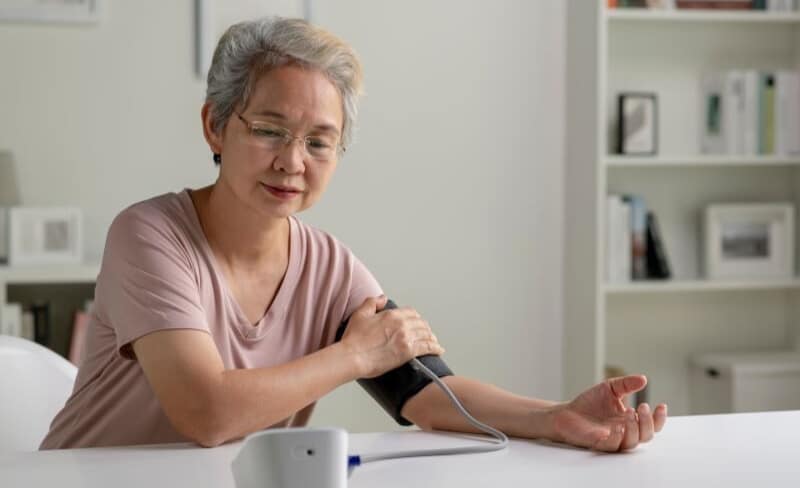While the COVID-19 pandemic undeniably increased interest in—and the availability of—remote patient monitoring (RPM), its usage is expected to continue to rise. In fact, according to the data, “RPM instruments will be used by 70.6 million US patients or 26.2% of the total population” by 2025.
When you consider the many benefits of remote patient monitoring—for both patients and practices—it’s no wonder why “a significant majority of healthcare professionals—roughly 85%—are making significant investments in RPM technology.”
But is remote patient monitoring right for your patients and practice, or are its benefits being over-emphasized? We’ve put this article together to explore the key reasons to implement RPM, so you can make the right decision for your practice and patients.
#1: Chronic Conditions are Common and Require Patient Engagement
RPM has several compelling use cases for healthcare providers, helping them to engage their patients and make timely, data-informed decisions about their condition(s) and care options. It can be used for the monitoring and management of a wide range of conditions, including:
- Asthma, which affects around 7.5% of Americans
- COPD, which affects nearly 5% of Americans
- Diabetes, which affects around 11.5% of Americans
- Heart conditions, which account for nearly 1 in 5 deaths
- High blood pressure, which affects nearly half (48.1%) of Americans
- Sleep apnea, which affects up to 20% of Americans (a majority of which are unaware or undiagnosed)
- Weight-related conditions, which affect well over half of Americans (with just over 40% being obese and just over 30% being overweight)
Considering the vast number of Americans with at least one of the conditions listed above, it’s no wonder that 4 of 5 view remote monitoring as a favorable option—and over three-fourths (76%) of hospitals currently offer some form of telehealth.
#2: RPM Enables Providers to Receive Regular Updates
For healthcare providers that treat patients with common conditions like asthma, COPD, and heart disease, remote monitoring can be a game-changer—reducing in-person visits, ER visits, and hospitalizations (among other benefits).
Utilizing RPM enables providers to receive regular, timely updates about their patients, including the ability to identify trends or irregularities and provide interventions as needed. They can make data-backed decisions for their patients, prevent re-hospitalizations, and form more constructive, trusting relationships with those in their care.
#3: Patients Benefits from the Convenience of RPM
The biggest benefits of RPM for patients are practical ones: convenience, efficiency, and empowerment.
Convenience: For patients with conditions that require vigilant monitoring, RPM makes it possible for them to take readings from their own homes (or wherever they feel comfortable) and have those results automatically and instantly relayed to their provider. Most RPM devices are easy to use, meaning RPM can be used with a wide range of patients (not just those who seem “tech savvy”).
Efficiency: Because RPM device readings automatically transmit to electronic health records and similar systems, it’s easy for patients to take the necessary readings and relay them to their provider(s). This greatly reduces the need for traditional, in-person appointments—which has a direct impact on patients receiving the care they need, when they need it.
Empowerment: For many patients, being diagnosed with a chronic condition can feel devastating; they can feel like their own health isn’t within their control. RPM changes that by engaging patients in their care and enabling more constructive, dialogue-based relationships with their providers.
#4: The Ease of Telehealth Appointments
When most people think of “telehealth,” they probably picture patients meeting with healthcare providers via a platform like Skype or Zoom—but telehealth is more than that. There are three key types of telehealth-based care: synchronous, asynchronous, and remote monitoring.
- In a synchronous telehealth setting, a live video feed enables healthcare providers to meet with patients in real-time.
- Asynchronous telehealth services, by contrast, do not occur in real-time. Patients can submit information, including images, to their healthcare provider who, in turn, reviews the information and responds by asking questions, providing information, or scheduling either a synchronous meeting or an in-person visit.
- Finally, remote patient monitoring services minimize the need for repeated, in-person visits by enabling patients to check their own vitals and transmit readings to their providers.
If you’re wondering whether RPM is easy to implement—or whether patients can effectively use RPM devices for accurate readings—the answer is yes. Most remote patient monitoring devices are things they’re likely to be at least somewhat familiar with, like blood pressure cuffs, scales for weight management, blood glucose meters, and more. The versions of these devices used for RPM include added functionality—when patients use them, their readings are automatically transmitted, in real-time, to their providers.
#5: Remote Patient Monitoring Solutions Are Easy to Implement
Remote patient monitoring is exactly what it sounds like—it enables healthcare providers to monitor patients’ chronic conditions without requiring frequent in-person appointments. As one of the key components of telehealth, at least part of its popularity has to be attributed to its versatility, ease of use, and efficiency.
Here’s how it works:
- Eligible patients work with providers to learn about their condition and the RPM device or devices they will be using to track their health.
- From the comfort of their own home, patients use special remote patient monitoring devices to gather readings, which are automatically transmitted to their provider or care team. Many RPM devices are familiar to most patients, including blood pressure cuffs, scales, pulse oximeters, and more.
- Providers can monitor patients’ vitals and provide interventions or schedule appointments as needed. Remote patient monitoring software, like TimeDoc Health, includes plenty of added functionality—like the ability to set custom alerts when patient readings fall out of the expected ranges, set up integrations with electronic health record (EHR) systems, and more.
Explore TimeDoc Health’s Remote Patient Monitoring Solution
At TimeDoc Health, we understand that patients’ needs often extend beyond the clinic’s walls, and RPM effectively fills care gaps and improves patient outcomes. By complementing traditional care with RPM, providers can deliver timely and comprehensive care as needed, while reducing the need for in-person visits and preventing hospitalizations.
Ready to learn more? Visit our success stories and resources pages to read some examples of remote patient monitoring done well—including the challenges we’ve helped providers to solve and the outcomes they have achieved. You can also contact us with any questions, or to get started with RPM and TimeDoc Health today.




